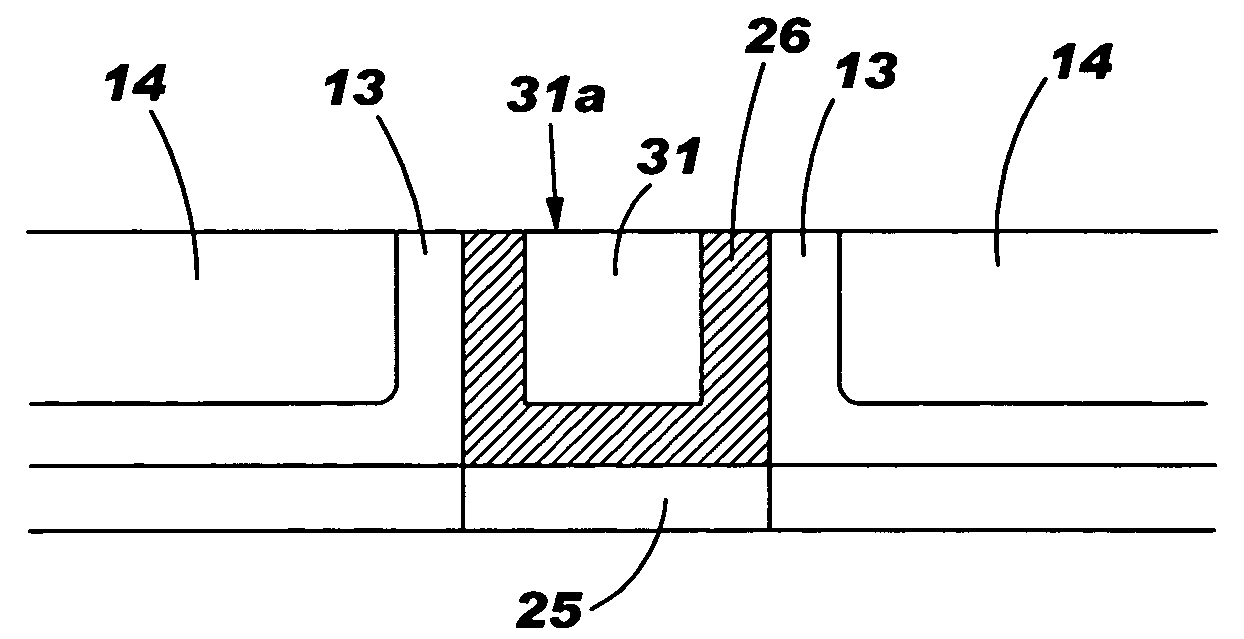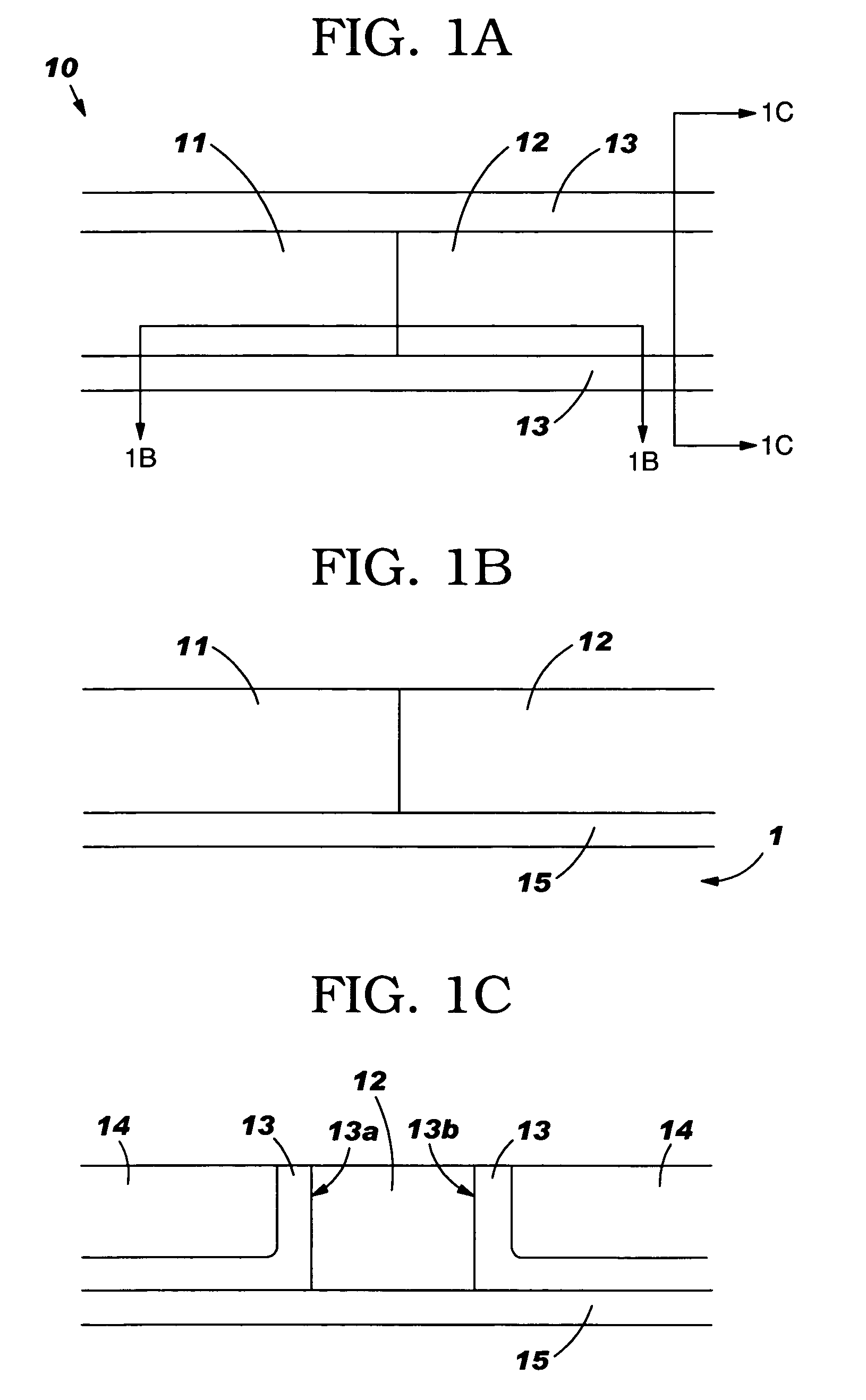FET gate structure with metal gate electrode and silicide contact
a gate electrode and metal gate electrode technology, applied in the direction of semiconductor/solid-state device details, instruments, transistors, etc., can solve the problems of poly depletion effect, increase of gate leakage current and diffusion of dopants, and manufacturing problems
- Summary
- Abstract
- Description
- Claims
- Application Information
AI Technical Summary
Benefits of technology
Problems solved by technology
Method used
Image
Examples
first embodiment
[0032] Single-metal Replacement Gate
[0033]In this embodiment, the dummy polysilicon gate structures 11, 12 are removed in the same process; any convenient process having selectivity to nitride 13 and oxide 14 may be used. This process exposes the sacrificial oxide layer 15, which is then also removed. A trench 20 is thus formed with sidewalls 13a, 13b of nitride and an exposed portion of substrate 1 on the bottom. A new gate dielectric 25 is formed on the exposed substrate, either by a deposition process or a thermal growth process. A conformal layer of metal 26 is then deposited as a blanket layer, covering the sidewalls of the trench and the gate dielectric 25. The composition and thickness of layer 26 are chosen to provide the desired work function, as is understood by those skilled in the art. FIGS. 2A and 2B are longitudinal and transverse cross-section views, respectively, of the structure after metal layer 26 is deposited.
[0034]A blanket layer 31 of undoped polycrystalline or...
second embodiment
[0037] Dual-metal Replacement Gate
[0038]In this embodiment, the dummy p+ and n+ polysilicon gate structures are removed separately, which requires masking of the polysilicon structure not being removed. FIG. 6 shows the structure after masking the p+ dummy gate 11, removing the n+ dummy gate 12 and the underlying sacrificial gate oxide 15, and stripping the mask. A portion of the substrate 1 is thereby exposed. A blanket gate dielectric layer 75 is then grown or deposited, and a blanket metal layer 75 is deposited thereover (see FIG. 7).
[0039]A blanket layer 81 of undoped polycrystalline or amorphous silicon is then deposited over layer 26. As in the first embodiment, the composition of layer 81 is chosen to provide the optimum trench fill. The structure is then planarized to again expose dummy gate 11, so that the top surface 81a of the fill material 81 is coplanar therewith. The planarization process may be performed in a single step, e.g. CMP of the poly / amorphous silicon, contin...
PUM
| Property | Measurement | Unit |
|---|---|---|
| channel length | aaaaa | aaaaa |
| thicknesses | aaaaa | aaaaa |
| electrical performance | aaaaa | aaaaa |
Abstract
Description
Claims
Application Information
 Login to View More
Login to View More - R&D
- Intellectual Property
- Life Sciences
- Materials
- Tech Scout
- Unparalleled Data Quality
- Higher Quality Content
- 60% Fewer Hallucinations
Browse by: Latest US Patents, China's latest patents, Technical Efficacy Thesaurus, Application Domain, Technology Topic, Popular Technical Reports.
© 2025 PatSnap. All rights reserved.Legal|Privacy policy|Modern Slavery Act Transparency Statement|Sitemap|About US| Contact US: help@patsnap.com



